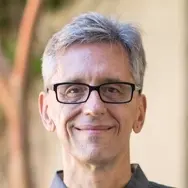China Seminar | 15 April 2015
Clay Alchemy: Daoist Subjects in 17th Century Chinese Porcelain
The 17th century represents a highlight in the long history of Chinese ceramics. Often known as the “Transitional Period,” since it saw the end of the Ming dynasty (1368-1644) and the beginning of the following Qing dynasty (1644-1911), this century is unique in that the Imperial kilns were without court patronage for several decades, resulting in the dissemination of the highest quality porcelain to new markets with diverse needs and interests. Popular culture became a common source for decoration on porcelain during this time, including Daoist immortals and other religious themes, some of which are widely known, while others are without precedent from other periods. Based on a presentation given at Christie’s New York in March 2015, in this talk Dr. Eichman will introduce some of the main Daoist subjects found on Chinese porcelain during the Transitional Period, including popular folk figures such as the Eight Immortals and deities such as the Perfected Warrior (Zhenwu), tracing the historical development of these themes and the ways in which they came to be used as decoration on porcelain.
Shawn Eichman is Curator of Asian Art at the Honolulu Museum of Art. He has a Bachelor of Science degree from Georgetown University, Master’s degrees from the University of Hawaii and Waseda University, and a Ph.D. in Chinese Literature from the University of Hawaii. Prior to the Honolulu Museum of Art, he worked at The Art Institute of Chicago, the Nelson-Atkins Museum, and the Virginia Museum of Fine Art. His most recent publication is Masterpieces of Landscape Painting from the Forbidden City, which accompanied the major exhibition of the same name at the Honolulu Museum of Art in 2011.
